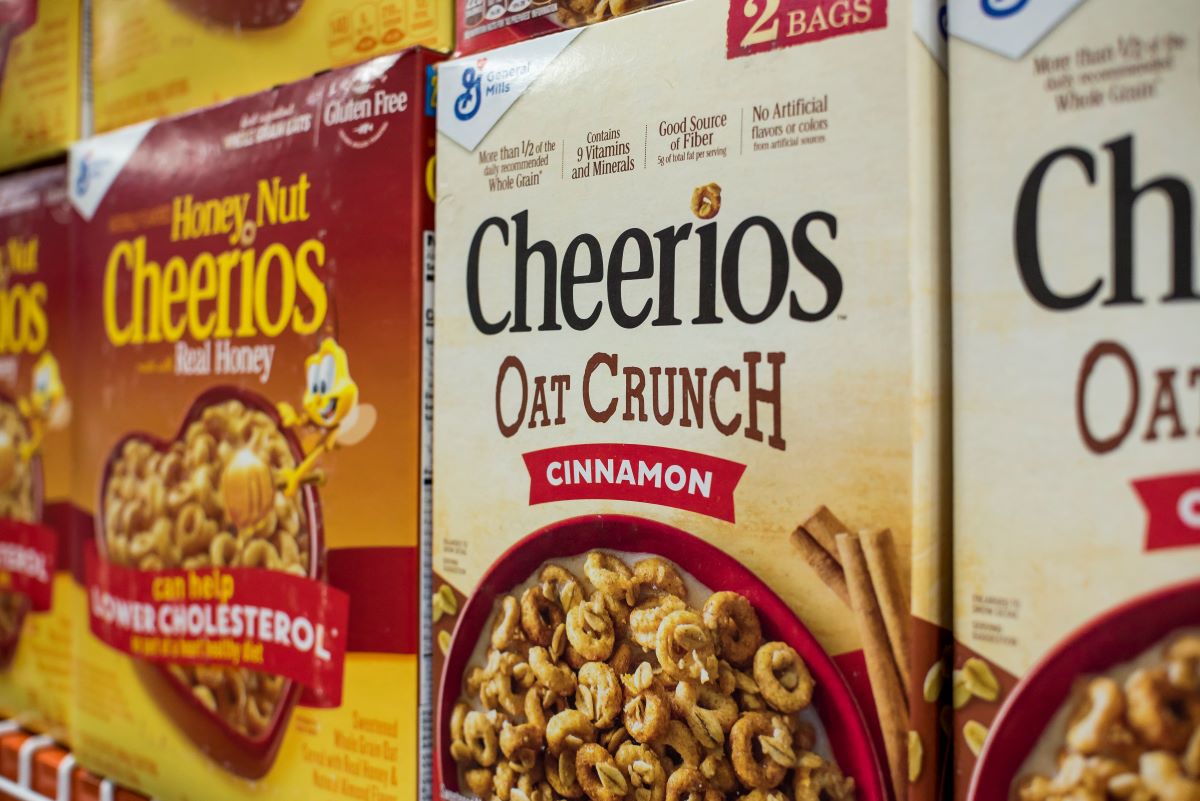MINNEAPOLIS — More consumers seeking value, shifts in where some consumers are shopping and even colder temperatures in January that limited how often some consumers ate at restaurants all continued to challenge General Mills, Inc.’s efforts to achieve meaningful growth during the third quarter of fiscal 2024.
“The biggest challenge, obviously, this year has been with growth,” said Jeffrey L. Harmening, chairman and chief executive officer of General Mills, during a March 20 conference call to discuss third-quarter results.
Management did hit a note of optimism, noting some emerging tailwinds it sees are moderating inflation, a reduction in supply chain disruptions, and improving consumer confidence about the US economy that is supported by wage growth and a strong labor market.
“In the next few months, we expect to lap two dynamics that have led to increased volatility over the past year,” Harmening said. “First, SNAP (Supplemental Nutrition Assistance Program) reduction headwinds in the US, and second, the normalization in on-shelf availability of our competitors, driven by stabilized supply chains. The next few months will be important in helping us better understand the dynamics of the consumer demand environment as we enter fiscal 2025.”
For the quarter ended Feb. 25, the company earned $670.1 million, equal to $1.18 per share on the common stock, and an improvement over the same time of the previous year when the company earned $553.1 million, or 94¢ per share.
Quarterly sales fell 1% to $5.09 billion from $5.13 billion. Organic net sales also fell 1% during the quarter.
Underpinning the rise in net income were productivity initiatives through the company’s Holistic Margin Management (HMM) program.
“To offset inflation, our first line of defense is always our HMM cost savings program,” Harmening said. “We have continued to make progress in removing disruption-related costs and accelerating our HMM delivery in fiscal ‘24. We remain on track to deliver 5% HMM cost savings this year, which is above both last year and our historical levels.
“At the same time we’re delivering a strong level of cost savings, we are also working to optimize our working capital and reduce our inventories. We made nice progress on this front in Q3, with our inventory balances at their lowest levels since the second quarter of fiscal 2022.”
The company’s North America Retail business unit had quarterly sales of $3.2 billion during the quarter, flat when compared to the third quarter of fiscal 2022. Positive net price realization was offset by lower pound volume, according to the company.
Segment operating profit was $752 million, down 4% in constant currency and driven by higher supply chain costs, input cost inflation, lower volume, and supply chain deleverage, partially offset by HMM cost savings and favorable net price realization.
“By focusing on brand building, innovation, and in-store execution, we’re beginning to see improvements in our North America Retail in-market competitiveness,” Harmening said. “In January and February, more than 40% of our priority businesses held or grew market share, and we are seeing improving share trends in several key businesses, including cereal, snacks, and desserts. Though not all of these businesses are back to share growth, we expect our competitiveness to continue improving as we lap the normalization of category on-shelf availability dynamics in April and May.”
Pet segment sales were down $624 million, 3% compared to the year before. Segment operating profit was $128 million, up 25% and supported by HMM cost savings and net price realization.
 Company said it is gaining share in its North American cereals, snacks and desserts retail business. Source: ©MDV EDWARDS – STOCK.ADOBE.COM
Company said it is gaining share in its North American cereals, snacks and desserts retail business. Source: ©MDV EDWARDS – STOCK.ADOBE.COM North America Foodservice segment sales rose 1% during the quarter while segment operating profit was down 1% to $82 million due, in part, to higher supply chain costs.
“…We continued to see the away-from-home environment stabilize, with a modest increase in overall traffic,” Harmening said. “Growth in quick-service restaurants and non-commercial channels, including education, travel, and leisure, was partially offset by declines in full-service restaurant channels. Enabled by improvements made in our supply chain during Q3, we delivered strong volume growth on key platforms, including cereal, frozen biscuits, and yogurt.”
Third-quarter International segment sales fell 3% to $680 million, driven by lower volumes, according to the company. Segment operating profit totaled $18 million compared to $42 million a year ago, driven primarily by higher input costs and lower volume.
“…China net sales declined due to continued macro-economic pressure, as well as lapping elevated at-home demand in December and January of our last fiscal year,” Harmening said. “These dynamics, in addition to headwinds in Brazil, were partially offset by continued net sales momentum in Europe and Australia.”
For the first nine months of fiscal 2024, General Mills earned $1.94 billion, equal to $3.35 per share, and down 2% when compared with fiscal 2023 when the company earned $1.98 billion, equal to $3.32 per share.
Sales ticked up 1% to $15.1 billion from $15 billion the year before.
The company reaffirmed its fiscal 2024 outlook of organic net sales ranging between down 1% and flat, and adjusted operating profit and adjusted earnings per share each expected to increase 4% to 5% in constant currency.
“Looking to our fourth quarter, there are a couple key assumptions that factor into our outlook,” said Kofi Bruce, chief financial officer. “First, we expect a meaningful headwind from the comparison against favorable trade expense timing in last year’s fourth quarter. This dynamic will present roughly a 3-point headwind to net sales growth and a double-digit headwind to adjusted operating profit growth in this year’s fourth quarter.
“Second, we expect continued input cost inflation on our cost of goods sold in the fourth quarter, and we’ll address that with continued strong HMM cost savings delivery.”





